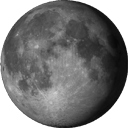 Image credit: ESA/PACS & SPIRE consortia, A. Rivera-Ingraham & P.G. Martin, Univ. Toronto, HOBYS Key Programme (F. Motte)
Image credit: ESA/PACS & SPIRE consortia, A. Rivera-Ingraham & P.G. Martin, Univ. Toronto, HOBYS Key Programme (F. Motte)
In this new view of a vast star-forming cloud called W3, the Herschel space observatory tells the story of how massive stars are born. Herschel is a European Space Agency mission with important NASA contributions. W3 is a giant gas cloud containing an enormous stellar nursery, some 6,200 light-years away in the Perseus Arm, one of our Milky Way galaxy’s main spiral arms.
By studying regions of massive star formation in W3, scientists have made progress in solving one of the major conundrums in the birth of massive stars. That is, even during their formation, the radiation blasting away from these stars is so powerful that they should push away the very material from which they feed. If this is the case, how can massive stars form at all?
Observations of W3 point toward a possible solution: in these very dense regions, there appears to be a continuous process by which the raw material is moved around, compressed and confined, under the influence of clusters of young, massive stars called protostars.
Through their strong radiation and powerful winds, populations of young, high-mass stars may well be able to build and maintain localized clumps of material from which they can continue to feed during their earliest and most chaotic years, despite their incredible energy output.


